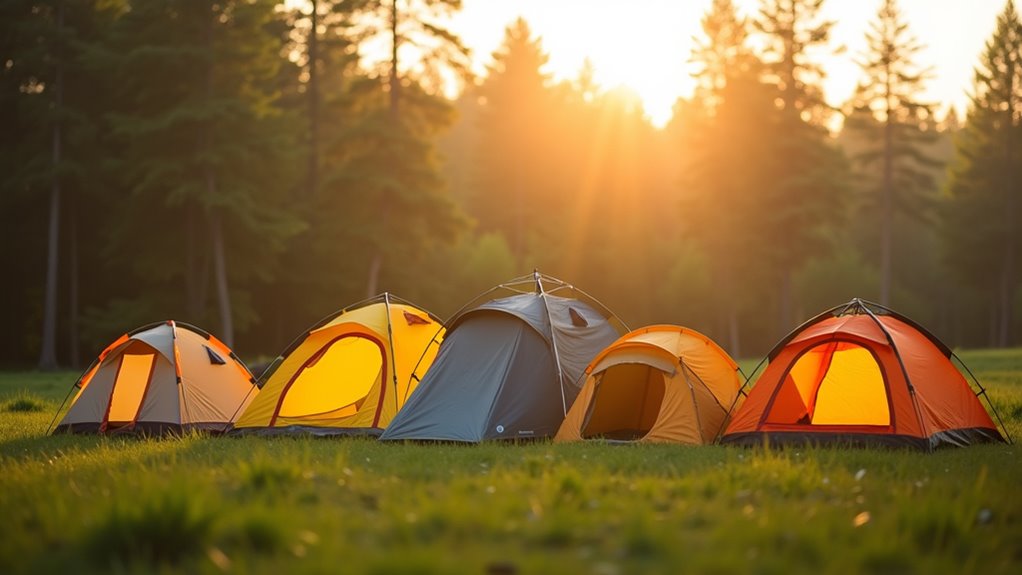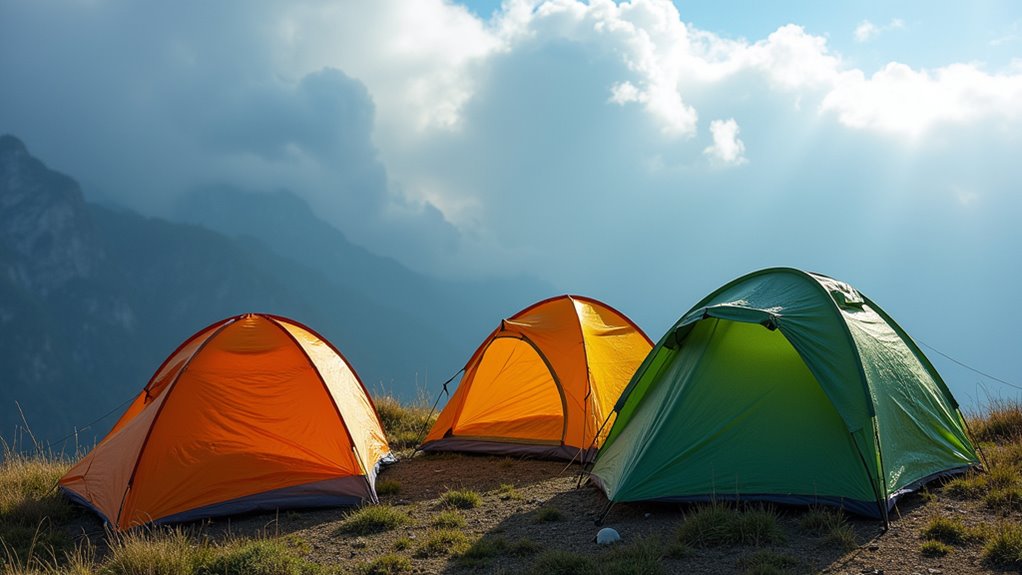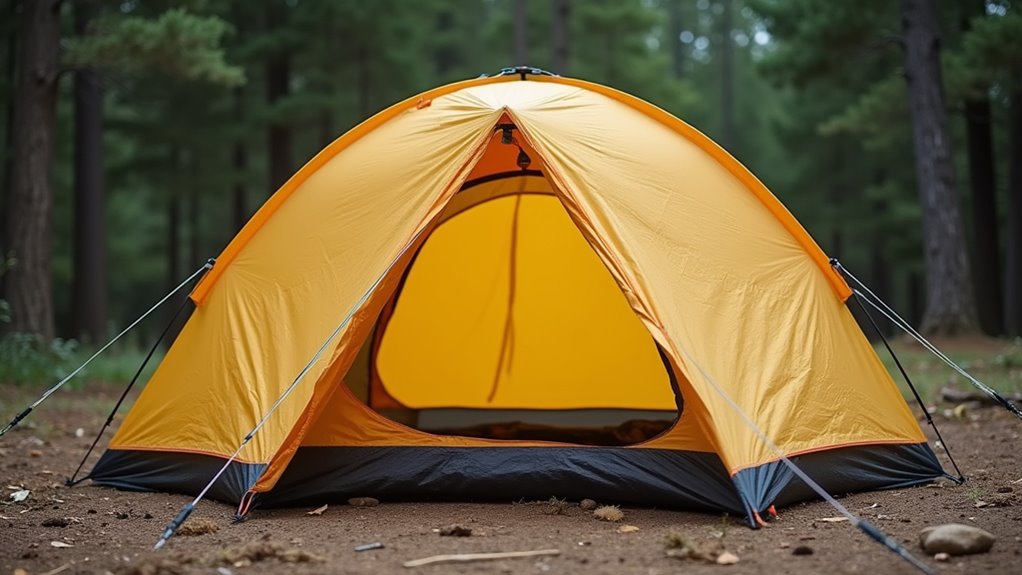Physical Address
304 North Cardinal St.
Dorchester Center, MA 02124
Physical Address
304 North Cardinal St.
Dorchester Center, MA 02124

Just starting your camping journey? Discover which tent features actually matter for beginners versus expensive marketing gimmicks that'll drain your wallet.
You’re standing in the outdoor gear aisle, staring at dozens of tent options, and honestly? It’s overwhelming. Here’s the thing—you don’t need the most expensive or feature-packed tent for your first camping trip. What you need is something reliable that won’t leave you frustrated in the dark or soaked when it rains. The key is understanding which features actually matter for beginners versus what’s just marketing fluff, and there’s a big difference.

When you’re choosing a camping tent, understanding the different types available will help you pick the right shelter for your specific adventure.
Dome tents offer excellent stability in windy conditions and they’re perfect for beginners due to their simple setup.
Cabin tents provide maximum headroom and living space, making them ideal for family camping trips where comfort matters most.
Backpacking tents prioritize lightweight design and compact packing, so they’re your best choice for hiking adventures.
Pop-up tents deliver instant setup convenience, though they’re bulkier to transport.
Tunnel tents excel in harsh weather conditions but require guy lines for proper stability.
Consider your camping style, group size, and weather expectations when selecting your tent type.
Remember that finding quality tents doesn’t have to break your budget when you know where to look for cheap camping gear.
After you’ve decided on the tent type that suits your camping style, determining the right size becomes your next essential decision. Don’t rely solely on manufacturer ratings – a “4-person tent” often feels cramped with four adults and their gear.
Consider these practical factors when sizing your tent:
You’ll appreciate the extra room when weather keeps you inside longer than expected. Remember that the perfect camping tent balances size, weight, and functionality to match your specific outdoor adventures.

Once you’ve got the right tent size figured out, you’ll want to match your shelter to the conditions you’ll face outdoors. Tent ratings break down into three main categories: three-season, four-season, and convertible.
Three-season tents handle spring, summer, and fall conditions. They’re lightweight with plenty of mesh ventilation but won’t withstand heavy snow loads or extreme winds.
Four-season tents tackle winter camping and harsh weather. They’re built with stronger poles, fewer mesh panels, and reinforced fabrics to handle snow and fierce storms.
Convertible tents let you swap components based on conditions. You can remove rain flies for ventilation or add vestibules for extra protection.
Check the tent’s waterproof rating too—look for at least 1,500mm for reliable protection. Remember that camping can be an enjoyable adventure for people of all ages, including senior campers who may need additional comfort considerations when selecting their tent.
Beyond weather ratings, several key features separate quality tents from budget disappointments. You’ll want to focus on these core elements that directly impact your camping experience.
Don’t get distracted by bells and whistles. These fundamental features determine whether you’ll sleep comfortably or spend the night wrestling with poor design choices. Quality construction in these areas pays dividends.
Consider exploring used camping tents as they often feature these essential elements at a fraction of the cost, allowing beginners to access quality construction without the premium price tag.

Even the best tent becomes useless if you can’t set it up correctly or maintain it properly. Practice pitching your tent at home before your trip – you’ll thank yourself when you’re fumbling in darkness at the campsite.
Choose level ground, clear away rocks and sticks, and stake down corners tightly to prevent wind damage.
After each trip, clean your tent thoroughly. Shake out dirt and debris, then wipe down surfaces with mild soap and water. Never pack a wet tent – moisture breeds mold and weakens fabric.
Air-dry completely before storing.
Check for small tears regularly and patch them immediately with repair tape. Store your tent loosely rolled, not stuffed, in a cool, dry place. For those planning winter camping adventures, ensure your tent is specifically rated for cold weather conditions and heavy snow loads. Proper care extends your tent’s life appreciably.
You’re now equipped with tent basics that’ll transform your camping experience. Here’s something cool: studies show that 78% of first-time campers who practice setting up their tent at home before their trip report feeling more confident outdoors. Don’t skip this step! Remember, there’s no perfect tent – just the right one for your needs. Start with a simple dome tent, focus on proper setup, and you’ll be creating outdoor memories in no time.